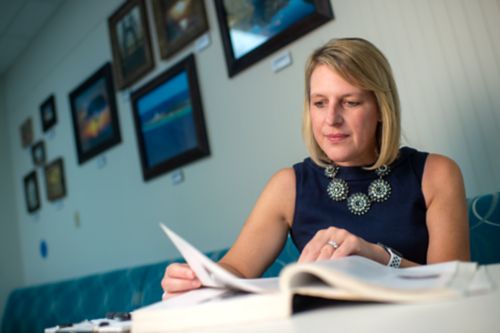St. Jude Family of Websites
Explore our cutting edge research, world-class patient care, career opportunities and more.
St. Jude Children's Research Hospital Home

- Fundraising
St. Jude Family of Websites
Explore our cutting edge research, world-class patient care, career opportunities and more.
St. Jude Children's Research Hospital Home

- Fundraising
Having and undergoing treatment for a brain tumor can impact a survivor long after concluding therapy, including by reducing academic readiness. Scientists at St. Jude found that very young children treated for brain tumors were less prepared for school (measured by academic readiness scores) than their peers, emphasizing a need to intervene before they start to struggle in school.
In one of the first studies to examine academic readiness in infants and young children (less than 3 years old) after brain tumor treatment, the scientists observed an increasing gap between the patients treated for brain tumors and their same-age peers. The study, published in the Journal of the National Cancer Institute, followed a group of 70 patients who had developed brain tumors and underwent treatment, assessing them six months after diagnosis and then annually for five years.

“Even in very young children, we found academic readiness was starting to lag behind healthy children their age,” said corresponding author Heather Conklin, PhD, Division of Neuropsychology chief and Department of Psychology and Biobehavioral Sciences member. “They were gradually falling behind their same-age peers in academic fundamentals, such as learning their letters, numbers, and colors.”
Previous research focused on school-aged children also observed gaps in academic skills, but such gaps in younger children revealed an early and pervasive challenge. “Early academic readiness was predictive of long-term reading and math outcomes,” said Conklin. “These children don’t catch up naturally.”
To address these concerns, the team proposed early intervention before a child enters elementary school. “We now know that we don’t need to wait until patients are struggling with math and reading; we can intervene earlier,” said Conklin. “We showed that the variability we’re seeing early on predicts long-term academic skills, which highly suggests earlier interventions will be beneficial and make a real difference.”
However, the researchers recognized that it was not enough to implement early interventions without first understanding what increased young learner’s vulnerability to or protected against the academic readiness gap. They examined myriad potential factors involved, such as treatment type and demographics, and found one stand-out determinant.
“The only clinical or demographic factor we found that predicted academic readiness was socioeconomic status,” explained Conklin. “Being from a family of higher socioeconomic status had a protective effect on children’s academic readiness.”
The finding that higher socioeconomic status is partially protective suggests that investing in resources to replace lost early enrichment experiences can mitigate the readiness gap. By increasing access to those opportunities, more children could be protected.
“Our results suggest that families can make play-time meaningful,” Conklin said. “By making small changes in how they interact with their child, with the support of their medical team and receiving appropriate resources, they can make a difference in their child’s cognitive and academic outcomes.”